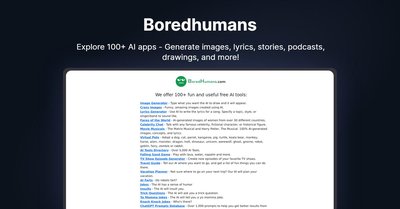Synthesis Tutor

Synthesis Tutor is an AI-powered educational tool designed to provide personalized math tutoring for children. It uses advanced AI technology to create an engaging and effective learning experience that helps children develop a love for math. The curriculum was created by Dr. James Tanton, a renowned mathematician with a PhD from Princeton University and multiple awards for teaching excellence. It covers a wide range of math topics, from arithmetic properties and fractions to algebra, geometry, and more. Synthesis Tutor is designed to be user-friendly and accessible to all children. A free demo is available for parents and children to try without any login credentials. It emphasizes privacy and complies with COPPA regulations.
Highlights
- Curriculum designed by Dr. James Tanton, a renowned mathematician and award-winning educator.
- Wide range of math topics covered, catering to children from ages 5 to 14.
- Technology based on DARPA-funded research, ensuring a high-quality learning experience.
Key Features
- Personalized learning experience tailored to each child's needs.
- Engaging and interactive lessons that make learning fun.
- Patient and supportive teaching style that encourages active participation.
- Covers a wide range of math topics, including arithmetic, fractions, decimals, algebra, geometry, and more.
- User-friendly platform with a free demo available.
- Emphasizes privacy and complies with COPPA regulations.
This content is either user submitted or generated using AI technology (including, but not limited to, Google Gemini API, Llama, Grok, and Mistral), based on automated research and analysis of public data sources from search engines like DuckDuckGo, Google Search, and SearXNG, and directly from the tool's own website and with minimal to no human editing/review. THEJO AI is not affiliated with or endorsed by the AI tools or services mentioned. This is provided for informational and reference purposes only, is not an endorsement or official advice, and may contain inaccuracies or biases. Please verify details with original sources.







Comments
Please log in to post a comment.